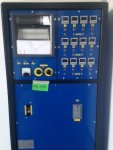jholc
New member
- Location
- Gillette, Wyoming USA
I have 480V 60Hz power to supply to a 50Hz ceramic heating unit that is used to preheat steel for welding repairs in a mining equipment repair situation. Will this work and what variables will i encounter? Thanks for any help you can provide.



